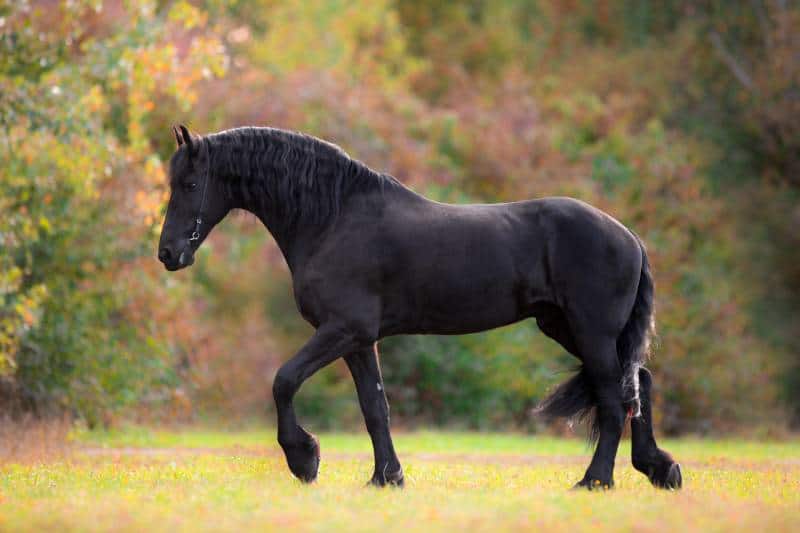All horses have coat colors, but those known as the ‘color breeds’ are actually bred for their equine colors!
Equestrians and breeders alike have favorite coat colors and color patterns. Conformation and temperament are important factors in choosing a horse. But once a breed has been decided on, the door is open to pick a horse for its color. There is a good deal of interest in identifying and breeding horses for color.
Many horses are valued primarily for aesthetics. Today this is even more so than their being valued for their utility. Scientific research into horse color genetics has made it possible for breeders to produce a variety of equine colors. Those horses with favored or popular colors and color patterns often command a better price than those with less favored colors and patterns.
Horse Coat Colors
Here are the most common to the least common equine colors:
Gray
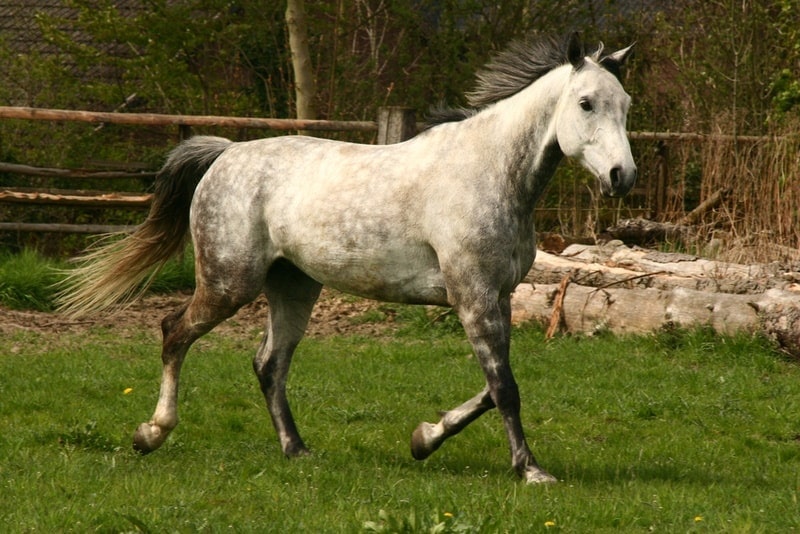
The most dominant horse color is gray, which is characterized by white or gray hairs and black skin. Even if a horse appears white, the horse is considered gray unless the skin is pink. Variations of this color are flea-bitten gray, which is gray hair intermixed with small, red dots, and dapple gray, which is lighter gray spots mixed in with darker gray.
Bay
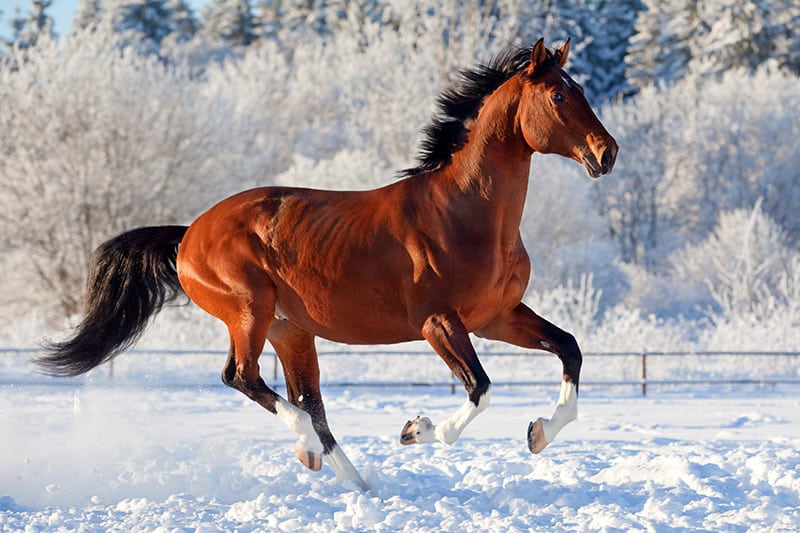
The bay color is the next most dominant color, characterized by a brown body with black lower limbs and a black mane and tail. The type of bay depends on the shade of brown. If a horse has a light brown body, it is called a light bay. If it is dark brown, it is called a dark bay. If a horse is a dark, reddish brown, it is called a blood bay.
Brown
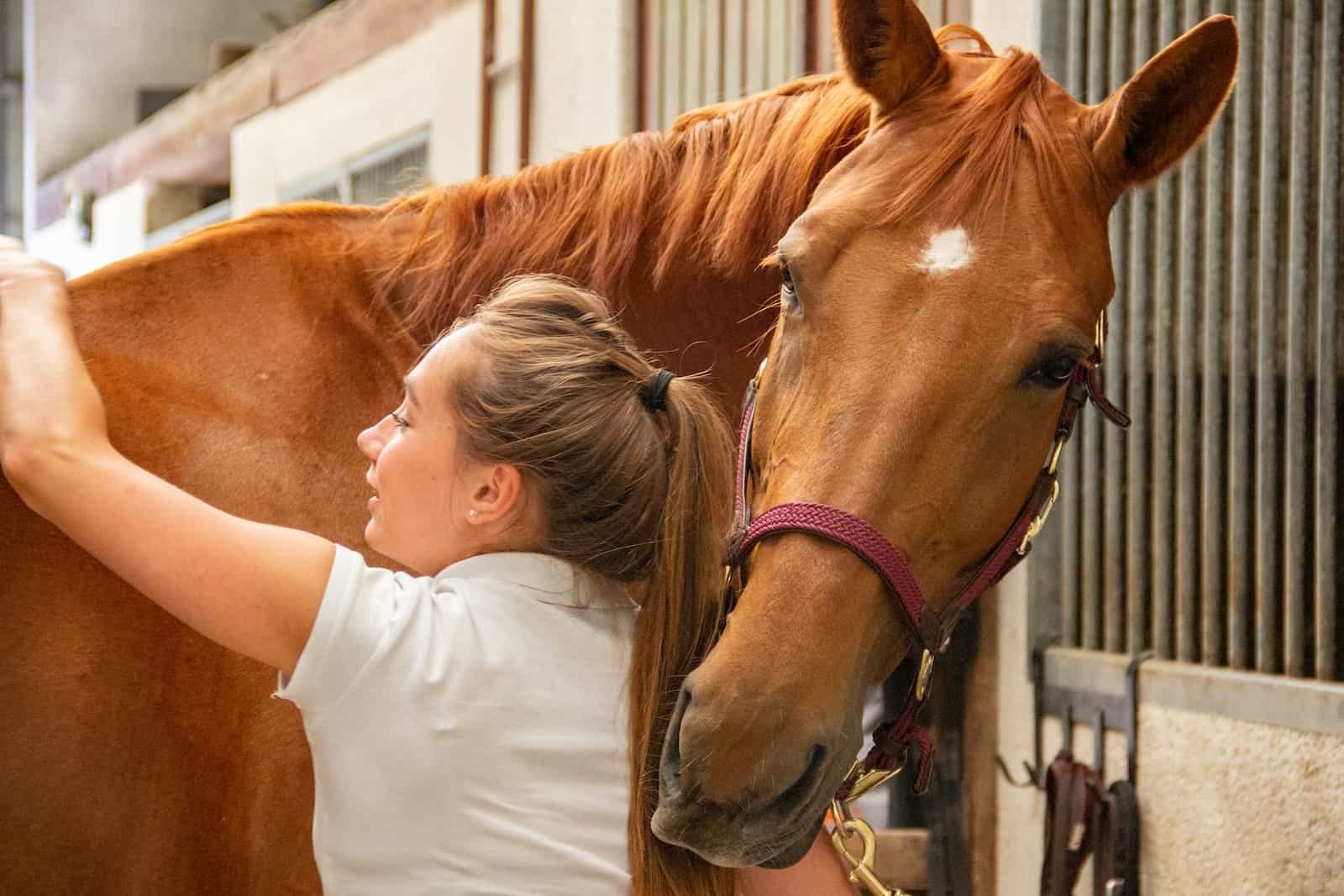
Brown is also a common horse color and it can range from light brown to dark brown, which is actually a mix of black and brown hair.
Black
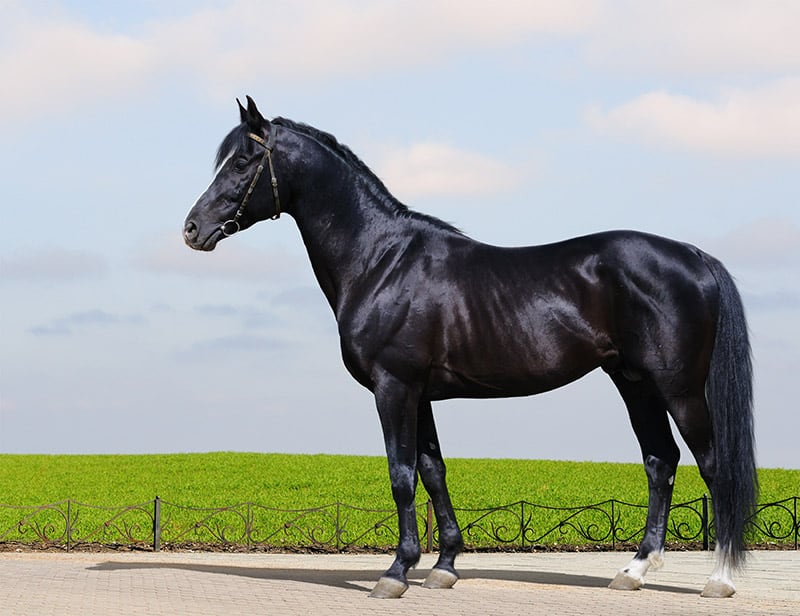
A black horse must not have any brown hairs in its coat to be considered black, but they can have white markings.
Chestnut
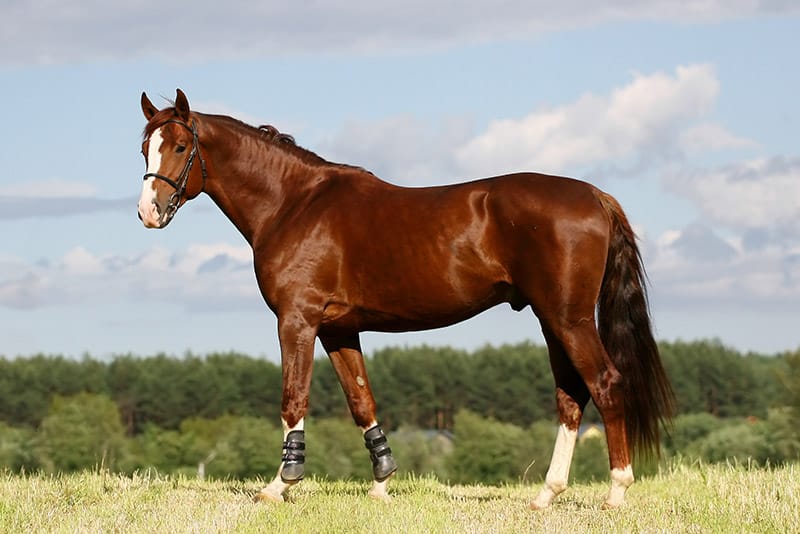
The chestnut horse has a golden brown color, which can range from very pale to red-gold. The darkest shade is called liver-chestnut. Chestnut horses can either have a flaxen or blonde mane and tail or the same color as their coat. If the mane and tail is darker than the coat, the horse is called a sorrel.
Dun

The dun horse has yellowish hair with black skin. Buckskin horses are dun-colored with black lower limbs, black mane and tail, and a dorsal stripe. They can also have zebra stripes on the back of the front legs above the knee.
Roan
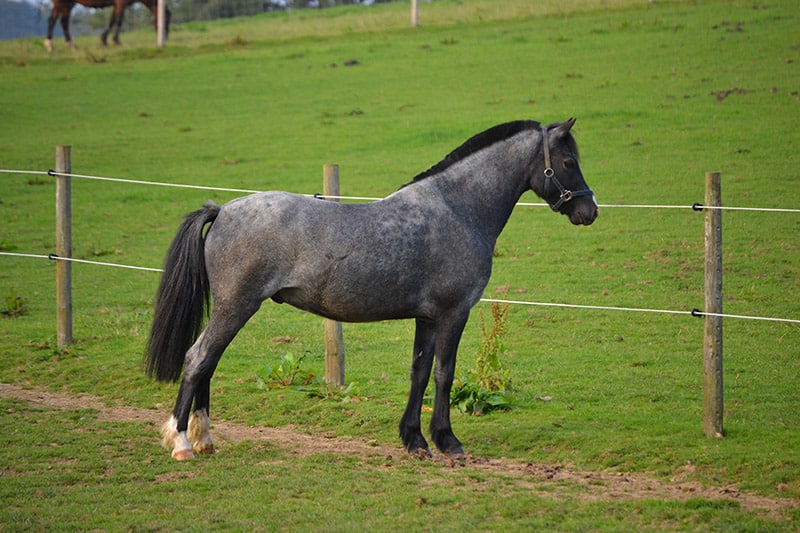
Roan horses have a solid coat with white hairs mixed in. Specific roan colors are strawberry roan, which is a chestnut horse with white hair mixed in, and blue roan, which is black or brown with white hairs.
Paint or Pinto
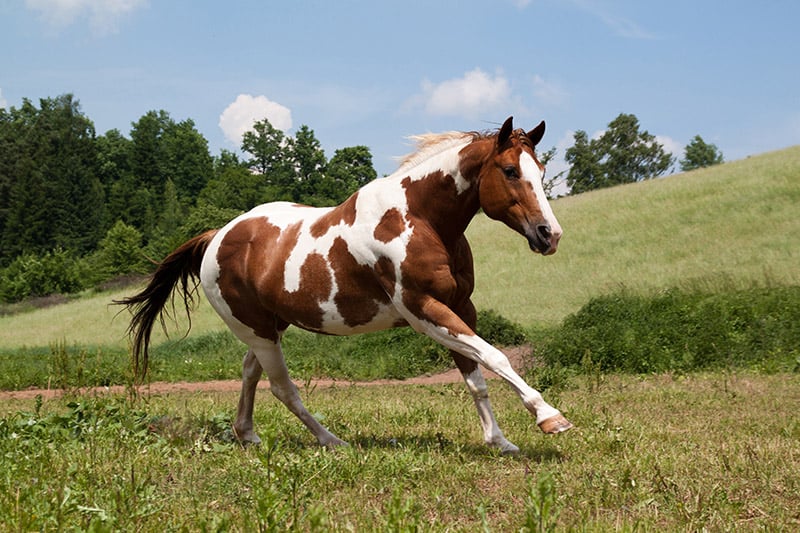
The paint or pinto horse has large patches of white and black or brown. Things can get confusing because the terms ‘paint’ and ‘pinto’ are only used in the USA, and Paint horses are also considered a breed in the USA. In other countries, the term ‘piebald’ is used for horses with patches of black and white, and ‘skewbald’ is used for horses with patches of white and any color except black.
Horse ‘Color’ Breeds
The “color” breeds are horses that must meet specific coat requirements to be accepted into their respective organizations. In some cases, this is regardless of the horse’s actual breed. For example a pinto colored Trakehner can be a registered pinto as well as a registered Trakehner. In some breeds the color itself is an important aspect.
Three major color breeds are the Pinto, the Buckskin, and the Palomino. All three have an organization, or breed association, in the United States. In these three breeds,d the color is important. The Palomino breed requires a golden coat with a flaxen mane and tail. While Palominos cannot have white spots on the body, they are permitted to have white markings on the legs.
The Appaloosa breed is also a color breed type that has a spotted color pattern. The skin of a spotted horse is both pink and black. Spotted horses come in five patterns which are remarkably precise, these include blanket, marble, leopard, snowflake, and frost.
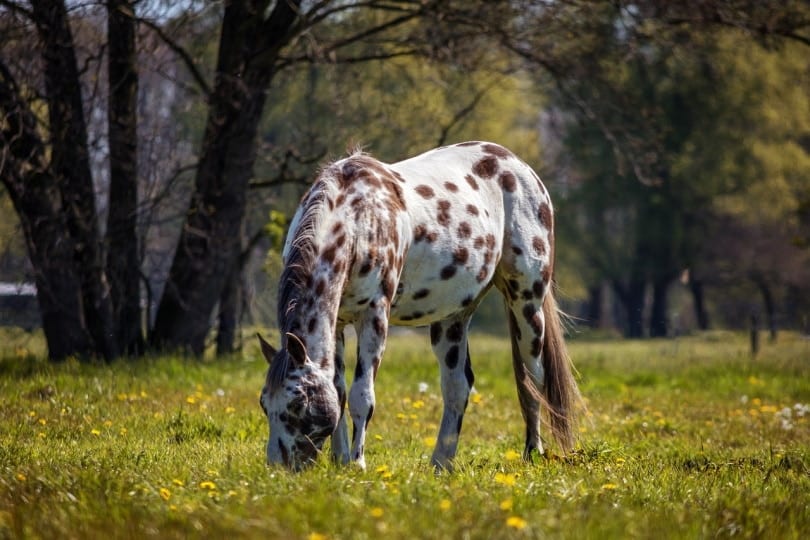
Horse Color Genetics
The coat color and patterning of the horse are determined by its genetic make-up. There are two individual genetic structures (or genetic controls) that make up the equine colors. One is the actual color, and the other is for the white color. These two structures act individually; neither is affected by genetic changes to the other. Think of the horse as having a basic color and white can be added on top, to cover up some of the color and create patterning.
Horses have a base color of either black or red (chestnut) and all the other colors are built off of these. This is done by combining the base color with other genes. So all other colors are created when one of these base colors has additional diluting or modifying genes. Then white color patterns are superimposed over the colored parts. Combinations include:
- Diluting genes – these include Champagne, Cream, Dun and Silver.
- Color modifier genes – these can affect the body color, or the mane and tail color (or both), and include Bay, Gray, Flaxen, Sooty (Smutty), and Mealy (Pangare’).
- White Color – patterns of white color are then superimposed over the colored parts and include the Appaloosa, Classic Roan, Mixed, Rabicano, Sabino, Splashed White, and Tobiano.
- Other Colors and Patterns – there are some colors or patterns whose cause is yet unknown, these include the Blend or Spots, Brindle, and Lacing.
Featured Image Credit: OlesyaNickolaeva, Shutterstock
